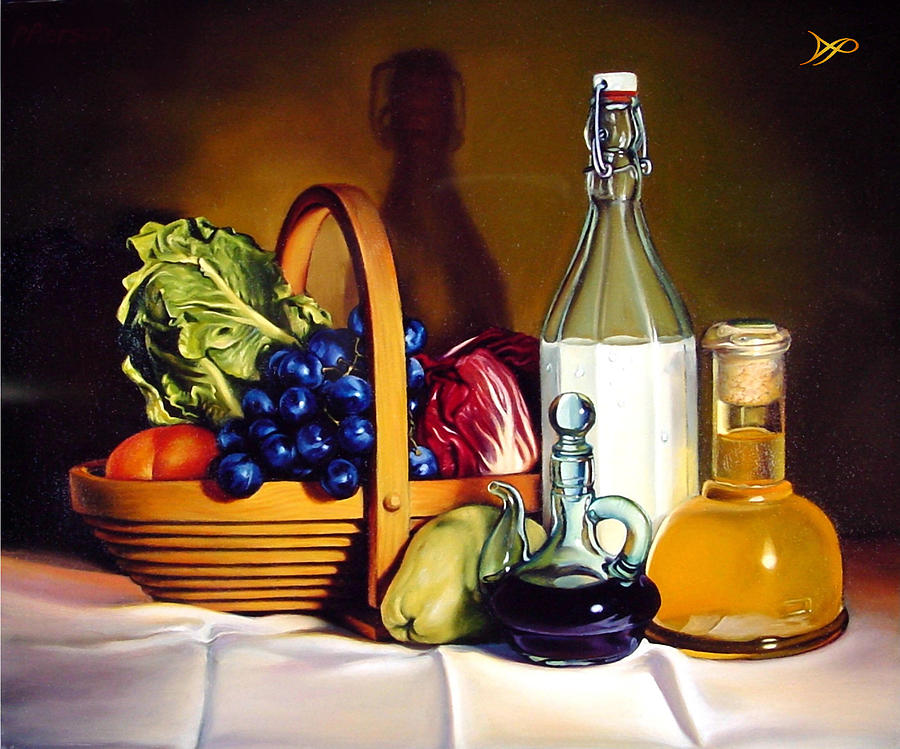Uncover Gorgeous Original Oil Paintings for Sale Online
Uncover Gorgeous Original Oil Paintings for Sale Online
Blog Article
Checking out Everything About Oil Paints: An Overview to Comprehending Their Elegance and Value
Oil paints have actually mesmerized audiences for centuries, using a peek right into the creative mastery of various ages. Their abundant background is linked with ingenious techniques and profound psychological expression. Understanding the materials and methods behind these artworks can enhance gratitude. Additionally, the market for oil paintings presents chances for collectors and financiers alike. As one explores this fascinating world, the question develops: what makes an oil painting really beneficial?
The History of Oil Paint: A Trip With Time
Oil paint has roots that date back to old times, it absolutely flourished during the Renaissance, when artists discovered its adaptability and rich shade possibility. Early instances can be traced to the 7th century, with techniques advancing notably across societies. The medium came to be famous in Northern Europe in the 15th century, specifically through the jobs of artists like Jan van Eyck, that spearheaded its usage for detailed realistic look and vivid tones. This period marked a separation from tempera paints, enabling for better deepness and structure. As oil painting spread, it affected plenty of artists, leading to masterpieces by distinguished numbers such as Leonardo da Vinci and Rembrandt. The medium's tradition proceeds, shaping the art world well into contemporary times.
Recognizing Oil Repaints: Products and Techniques
As artists explore the world of oil paints, they experience a varied range of products and strategies that define this tool. The primary parts of oil paint include pigments, which give shade, and drying out oils, such as linseed, that bind the pigments and help with application. Various ingredients can modify the paint's texture and drying out time, enhancing flexibility. Methods like glazing, where transparent layers are accumulated, and impasto, which involves applying thick paint, enable various aesthetic results. Furthermore, the use of brushes, combination knives, and even fingers can develop one-of-a-kind appearances and surfaces. Comprehending these techniques and materials makes it possible for artists to completely reveal their creativity and attain the desired effect in their art work.
The Role of Color in Oil Paintings
Color plays a pivotal duty in oil paints, affecting both aesthetic allure and emotional resonance. Comprehending color concept essentials, including the partnerships between tones, can improve a musician's ability to communicate mood and ambience. In addition, mastering color mixing strategies allows for better depth and richness in a painting's scheme.

Shade Theory Essential
Comprehending shade theory is important for musicians functioning with oil paints, as it creates the foundation for producing harmonious and aesthetically engaging make-ups. Color theory encompasses the research study of exactly how shades interact, the color wheel, and the relationships in between key, additional, and tertiary colors. Musicians use complementary shades to boost contrasts and produce focal points, while analogous shades advertise unity and cohesiveness within an item. In addition, the principles of cool and warm shades affect the perception of depth and room in a paint. Understanding these concepts enables musicians to adjust color efficiently, directing the audience's eye and interacting their designated message. Proficiency of color theory ultimately enhances an artist's capability to convey emotions and ideas through their job.
Emotional Influence of Shade
The emotional impact of shade in oil paintings plays an important duty in just how visitors perceive and attach with artwork. Shades evoke particular feelings and moods, affecting the customer's mood. For circumstances, warm tones like reds and oranges can create a feeling of heat and energy, while great tones such as blues and eco-friendlies often evoke peace or introspection. Artists strategically pick color schemes to boost narrative aspects, guiding the audience's emotional trip. The saturation and comparison of shades additionally magnify these results, attracting attention and producing focus. Eventually, the interaction of colors in oil paintings not just improves their visual allure but likewise acts as an effective medium for psychological expression, enhancing the audience's experience and analysis.
Color Mixing Techniques
While many aspects of oil painting add to the total composition, grasping color blending strategies is important for achieving desired results and deepness. Shade mixing can be approached through numerous approaches, consisting of the subtractive and additive procedures. Additive blending entails incorporating colors of light, while subtractive blending relies upon pigments, where colors mix to develop new tones. Musicians frequently utilize a minimal scheme to produce unified works, understanding the connections in between key, second, and tertiary shades. Techniques such as glazing and scumbling further boost depth and luminance. By masterfully mixing shades, an artist can evoke feelings, create centerpieces, and achieve a sense of realistic look, ultimately elevating the paint's emotional and aesthetic effect.
Famous Oil Painters and Their Iconic Works

Renowned for their proficiency of shade and method, oil painters have developed a few of one of the most celebrated artworks in history. Distinguished musicians like Vincent van Gogh mesmerized target markets with his stirring brushwork in "Starry Night," while Claude Monet's "Perception, Dawn" laid the foundation for Impressionism. Leonardo da Vinci's "Mona Lisa" stays an enduring sign of creative wizard, showcasing his skill in catching human expression. Rembrandt's "The Night Watch" highlights his cutting-edge use of light and darkness. Various other notable figures consist of Pablo Picasso, that revolutionized contemporary art with his strong trial and error in jobs like "Les Demoiselles d'Avignon," and Georgia O'Keeffe, whose vivid depictions of landscapes and blossoms assisted define American innovation. Each musician's distinct design contributed considerably to the oil painting landscape.
Just how to Evaluate the Quality of an Oil Paint
Reviewing the high quality of an oil painting includes a cautious analysis of workmanship strategies, as well as an analysis of color and composition. Observing brushwork, layering, and the application of paint can disclose the musician's ability degree. Furthermore, the interplay of colors and the total arrangement of elements add significantly to the paint's visual value.
Examining Workmanship Techniques
A careful assessment of workmanship strategies is vital for identifying the top quality of an oil painting. Evaluators need to first check out the application of paint; thick, distinctive brushstrokes might suggest a proficient hand, while extremely uniform applications can indicate a lack of deepness. oil paintings for sale. The layering strategy is likewise vital; the visibility of glazes and varied thickness can boost luminance and complexity. Furthermore, the quality of the materials used, such as the canvas and pigments, plays a substantial function in sturdiness and total aesthetic. Interest to detail in aspects like edges and shifts in between colors reflects the artist's dedication to their craft. Eventually, these methods contribute to the painting's psychological impact and market value, functioning as signs of the artist's skill and intent
Analyzing Color and Composition
While evaluating the top quality of an oil painting, one should concentrate on the interplay of shade and composition, as these aspects are essential to the artwork's total effect. Shade choices can develop and evoke feelings state of mind; as a result, the musician's scheme should be checked out for consistency and contrast. A healthy make-up routes the viewer's eye and creates a sense of unity. Musicians commonly utilize strategies like the regulation of thirds or leading lines to improve visual rate of interest. In addition, using light and shadow can include depth, enhancing the three-dimensionality of the painting. Eventually, a successful oil paint marries shade and make-up, involving the customer and welcoming a much deeper appreciation of the artist's vision and strategy.
Taking care of and Preserving Oil Paintings
Proper care and conservation of oil paintings is important for maintaining their honesty and longevity. To secure these art work, it is essential to present them far from direct sunshine, which can create fading and discoloration. Preserving a steady environment with regulated temperature and moisture further help in stopping damage. Cleaning need to be done gently using a soft, dry cloth, avoiding any kind of extreme chemicals that can hurt the paint or varnish. Regular assessments for signs of damage, such as fracturing or flaking, are advisable. When storing or transporting oil paintings, proper cushioning and framework are required to prevent physical damage. Eventually, thorough treatment adds to the visual charm and worth of oil paints over time.
The Marketplace for Oil Paints: Spending and collecting
Understanding the market dynamics for oil paintings is necessary for collectors and financiers alike. The worth of these artworks is influenced by various elements, consisting of the artist's track record, historical relevance, and current trends. Collectors frequently look for items that reverberate directly while considering possible admiration in value. Galleries and auctions work as key locations for trading, with costs varying based upon need and rarity. Investing in oil paints requires research right into the marketplace, in addition to an understanding of credibility and provenance. Additionally, emerging artists may offer chances for substantial returns, while developed names can command high rates. Generally, a calculated strategy to gathering can generate both visual enjoyment and financial incentives.

Frequently Asked Inquiries
What Are the Ecological Effects of Oil Painting Materials?
The environmental impacts of oil painting products consist of the release of unpredictable natural substances (VOCs), damaging waste generation, and resource extraction for pigments. These elements add to contamination and eco-friendly destruction, raising issues among eco mindful musicians and customers.
Exactly How Do Different Canvases Influence Oil Paint Results?
Various canvases influence oil painting results significantly. Texture, surface area, and absorbency high quality can alter paint application, drying times, and color vibrancy. Musicians commonly pick particular canvases to achieve wanted impacts and enhance their creative expression.
Can Oil Paintings Be Brought Back if Harmed?
Oil paints can undoubtedly be restored if damaged. Specialist conservators use various methods to repair tears, clean surface areas, and address discoloration, ensuring that the artwork preserves its initial elegance and value for future generations.
What Are the Indicators of an Original Oil Painting?
The indicators of an original oil painting consist of noticeable brush strokes, texture variants, and an uneven canvas weave (oil paintings for sale). Additionally, credibility may be validated with provenance, signatures, and the existence of a varnish layer one-of-a-kind to oil mediums
Just How Has Technology Influenced Modern Oil Painting Techniques?
Modern technology has greatly affected modern oil paint strategies by presenting electronic devices for preparation, enhanced materials for appearance and longevity, and on-line systems for selling and sharing art, therefore broadening musicians' imaginative possibilities and audience get to. Oil paint has origins that date back to ancient times, it truly thrived throughout the Renaissance, when musicians discovered its convenience and rich shade possibility. The emotional impact of shade in oil paints plays a vital function in just how customers view and connect with art work. While numerous elements of oil painting add to the overall composition, understanding shade blending techniques is necessary for attaining desired impacts and depth. Evaluating the high quality of an oil painting includes a careful analysis of craftsmanship techniques, as well as an evaluation of shade and structure. While evaluating the high quality of read more an oil paint, one have to concentrate on the interplay of color and composition, as these components are fundamental to the artwork's general influence.
Report this page